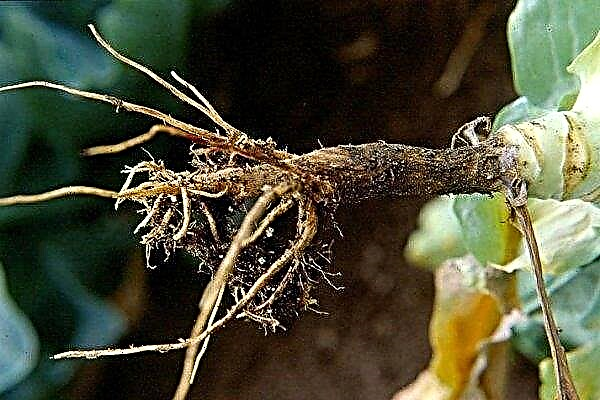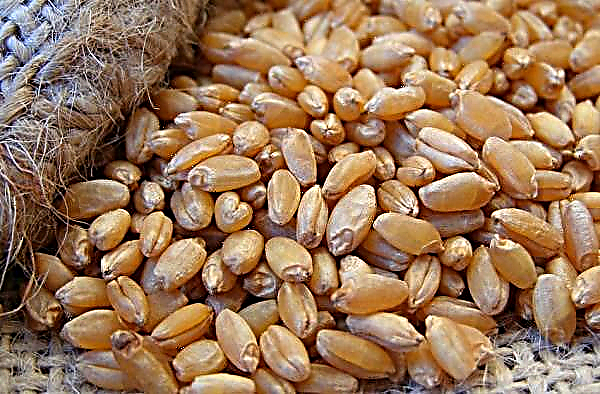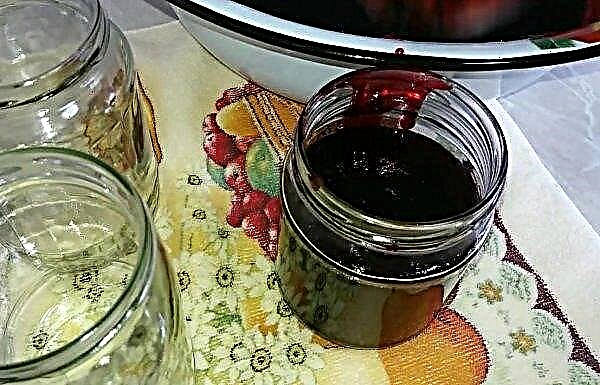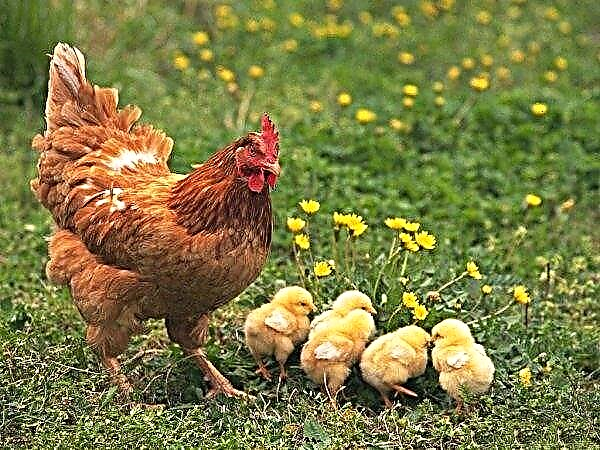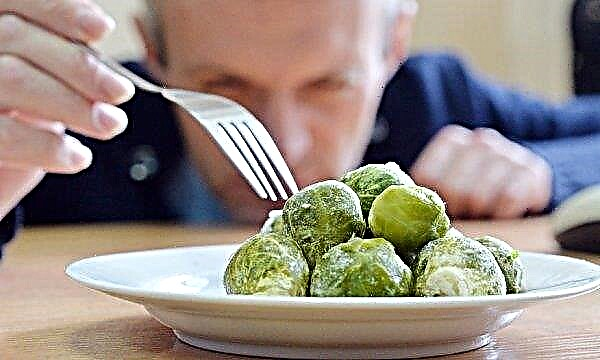100 years ago, watermelons were associated with the hot southern countries. Growing watermelon in open ground is something that the inhabitants of central Russia could not afford. Thanks to hybrids such as Karistan F1, this has become quite possible. Read about this variety and how farmers take care of melons and watermelons in this review.
Did you know? Watermelon contains only 40 kcal per 100 g. There is a lot of lycopene in it, more than in any other fruit or vegetable. Lycopene is a powerful antioxidant that can reduce inflammation and neutralize free radicals.
History of breeding and regions of growth
For the Dutch company Syngenta Seeds B.V. the production of seeds of first-generation hybrids is one of the important areas of activity. Variety Karistan F1 bred relatively recently. In Russia, he became known since 2007 and entered into the State Register since 2012.
Did you know? The sweetness of watermelon can be measured on the Brix scale. For most watermelons, this parameter is 9–10%. Very sweet watermelons have an indicator of 11-12% on the Brix scale.
The main characteristics of the variety
This is one of the best varieties characterized by high productivity, disease resistance and excellent taste.
Variety description Karistan F1:
- company - Syngenta;
- shape - from oval to oblong;
- weight - from 10-12 to 16 kg;
- bones - small white or black;
- pulp - dense and crispy;
- the color of the pulp is dark red;
- lashes - medium length;
- leaves are slightly dissected;
- disease resistance / tolerance - fusarium 0.1; Anthracnose 1;
- planting - seedling method;
- ripening - 60–65 days after planting seedlings; the variety is considered mid-early;
- acclimatization is very good; resistant to sunburn;
- yield potential is very high; without watering - 150–250 kg / ha; with drip irrigation - 700 kg / ha;
- the regions most suitable for cultivation are the southern, central and middle regions of Russia;
- Brix level - from 6 to 7.7%;
- commercial characteristic - high preservation and transportability of fruits.
Important! The sweetness of a watermelon depends on how hot the weather was. If the summer is rainy, then even the sweetest varieties will produce beautiful, but unsweetened fruits.
Plus qualities and possible disadvantages of the variety
This hybrid is different in that it grows well on most soil types. It can land in the ground as soon as warm sunny weather is established.
- Among the advantages of the variety can be noted:
- good taste and commercial properties;
- a small number of seeds;
- high productivity;
- early ripening;
- the possibility of growing on a large type of soil and in a wide range of climatic zones.
- The disadvantages of the variety:
- Hybrid seeds cannot be obtained from the crop, they must be bought again every year;
- for a temperate climate, seedling cultivation is mandatory. [
Landing Features
Watermelon grows on sandy or light textured soils, which warm well in the spring. The soil must also be fertile. Be sure to apply 60 kg of nitrogenous fertilizers per 0.5 ha. It is also mandatory to use calcium fertilizers. Calcium deficiency causes rotting of the ovaries.
Did you know? The Japanese grow square watermelons, placing them at the beginning of growth in square glass boxes. They like that the fruit is small, does not roll and can be compactly placed in the refrigerator. Are there any disadvantages? Of course, these watermelons cost about $ 82!
Landing Features:
- planting depth - 1-2 cm;
- the distance between plants - 30-50 cm;
- distance between rows - up to 1m.
Seeds
If you decide to plant a watermelon with seeds, then select for this a plot of 0.7 x 1.4 m in size. Watermelons need a patch that receives 8–10 hours of sunlight per day. It must be fertilized in places of planting seeds. It makes holes with a depth of about 9 cm with the above distance between individual plants. Seeds 1–2 are placed in the hole in order to ensure better germination. They fill it with soil and watered from a watering can. When planting seeds, it is recommended to use pre-sprouted seeds, in which case they are planted in moist soil, so as not to damage the emerging root. If landing is carried out in rows, then they should be located at a distance of about 2 m from each other. The distance may vary slightly depending on the technology that will be used to control weeds, and other work on the maintenance of crops.
When planting seeds, it is recommended to use pre-sprouted seeds, in which case they are planted in moist soil, so as not to damage the emerging root. If landing is carried out in rows, then they should be located at a distance of about 2 m from each other. The distance may vary slightly depending on the technology that will be used to control weeds, and other work on the maintenance of crops.
Seedlings
Plant watermelon seeds indoors about 6 weeks before transplanting seedlings to a permanent place. Plant seeds in biodegradable pots of peat or paper, which can be completely planted in the soil so as not to damage the roots during transplanting. Deepen the seeds into the soil to a depth of 1.5–2 cm. Glasses with seeds should be sprinkled with water and put under a film to create the optimum air temperature for germination. Shoots will appear after 10 days at a temperature of + 18 ° C. They will feel comfortable if the air temperature is around +23 ... + 25 ° С. At the time of transplanting into the soil, each plant should have 3-5 real leaves. The estimated time for planting seedlings in the soil is the end of May.
The process of growing watermelon
Watermelons need a long growing season (at least 65 days), warm soil and high air temperature, which does not fall below + 21 ° C. Regardless of whether the watermelons were sown with seeds or seedlings, they will need:
- regular watering;
- fertilizer application;
- taking measures to prevent diseases and pests.
To speed up the development of watermelons in a cool climate, cover the planting area with black polyethylene to warm it. And also use planting seedlings.
Features of growing in a greenhouse
If you have a heated greenhouse, you can grow watermelon from seeds at any time of the year. Indeed, in such a greenhouse you can control the light, temperature and humidity level necessary for the germination and growth of plants. Once the watermelons are large enough, they can be transplanted into the open ground or grown using trellis.
Planting and growing technique:
- Fill the containers for sowing seeds with soil mixture.
- Moisturize her.
- Place the seeds in the soil to a depth of 2 cm and cover with a film. The soil must warm up to a temperature of +23 ... + 25 ° С within 24 hours. This is necessary to accelerate germination.
- Keep the temperature in the greenhouse at +28 ... + 32 ° C for 2 days.
- Then lower it to + 18 ° C. Keep this temperature until true leaves appear.
- Water as needed.
- In the phase of the first true leaf, fertilize with nitrogen fertilizers. It can be ammonium nitrate. The application rate is 5-10 g / sq. m
- Perform the second feeding when the second true leaf appears.
- If the plants will be planted in open ground, then continue to lower the temperature to acclimatize watermelons to outdoor temperatures. Reduce watering at the same time.
- If the plants will grow in a greenhouse, then perhaps they should be transplanted into separate containers, but it depends on the structure of your greenhouse.
- Tie the vines to the trellis. Prepare slings for watermelons from elastic materials.
- After the vines have developed sufficiently, use fertilizing with balanced fertilizers with a ratio of nitrogen, phosphorus and potassium of 20:20:20. And when the fruits appear on them, they are fertilized with nitrogen fertilizers. The ratio is 30: 0: 0.
- Harvest ripens approximately 60 days after flowering.
Video: planting a watermelon in a greenhouse
In the open ground
Planting seeds or seedlings in open ground is carried out from late May to mid-June. Keep in mind that plants planted in the ground in mid-June will ripen in mid-September, so this planting period is convenient only for the southern regions. Before planting, check the soil for acidity (pH). Watermelons grow best on well-drained sandy loamy soils with a pH of 6.0 to 6.5.
If the acidity is lower, then plants with yellow foliage are obtained, which give small fruits or do not give them at all. Improve the condition of the soil by introducing rotten manure or compost in spring or autumn. Do not use fresh manure. It may contain harmful bacteria and increase weed growth. To improve drainage, watermelons are planted “on the hills”.
Basic rules for watering after planting:
- Water deeply and rarely. Depth - up to 4 cm. Frequency - 1 time per week.
- Use a drip hose to water to keep the leaves dry.
- Do not use a sprayer and do not spray the plants with a hose.
- Gradually reduce watering as the fruits ripen to improve their taste.
Video: planting seedlings of watermelon in the open ground
Spread row spacings with a garden hoe. Loosening the soil is necessary in order to remove weeds and provide the roots with the best conditions for development. The root system of watermelons is close to the surface of the soil, so you should not loosen too deep or too close to plants. If you use mulch, straw or sawdust for weed control, do not use it until the soil warms up to + 24 ° C. Mulch materials can slow down warming up.
Important! 2 weeks before ripening, stop watering. This can lead to cracking watermelons and worsen their keeping quality.
Diseases, pests and their control
There are a number of insects that can hit a watermelon plantation:
To combat most pests, crop rotation and the destruction of plant debris from melons are mandatory. This will prevent the wintering of insects in them.
If the soil is cold and wet, then fungal diseases can develop:
To avoid these diseases, do not grow watermelons in areas where other pumpkin plants grew for 3-4 years. Also, reduce humidity, prevent water from getting on the leaves, remove weeds and give the plants enough air and free space for disease prevention.
Did you know? Watermelons have been grown in Egypt for over 5,000 years. The Egyptians depicted them on the walls of the tombs and even left watermelons for the dead so that they could have a meal while traveling around the underworld.
If infected plants are found, they are treated with insecticides from insects and fungicides from phytopathogens. The most commonly used fungicides are copper based. Their principle of action is that they are able to disinfect the surface of vines and leaves, protecting them from the penetration of fungi into the plant.
Proper harvest
Maturity is determined by four methods:
- when the antennae closest to the fruit dries and turns brown;
- when an earthen stain changes color from white to yellow;
- when the flowering end of the fetus becomes soft;
- shock test - a ripened watermelon should make an empty sound.
 Cut watermelons gently from the vine to avoid cuts and rotting at the end of the stems. Store them at a temperature not exceeding + 7 ° C and a humidity of 85% for up to 3 weeks. Growing a hybrid Karistan F1 can be attractive to any gardener. The variety is characterized by early ripening, good taste, abundant fruiting. It is harvested in most regions and can be grown both in soil and in greenhouses.
Cut watermelons gently from the vine to avoid cuts and rotting at the end of the stems. Store them at a temperature not exceeding + 7 ° C and a humidity of 85% for up to 3 weeks. Growing a hybrid Karistan F1 can be attractive to any gardener. The variety is characterized by early ripening, good taste, abundant fruiting. It is harvested in most regions and can be grown both in soil and in greenhouses.

